#thomas burke
Text
Final Destination fans, assemble. Are we still active or no? Please reply lmao i need more moots
#final destination#alex browning#clear rivers#carter horton#billy hitchcock#tod waggner#kimberly corman#thomas burke#evan lewis#nora and tim#eugene fd#i forgot their names#ian mckinley#molly and sam#final destination 2#final destination 3#final destination 4#final destination 5#final destination 6
51 notes
·
View notes
Text
Thomas: You're under arrest for trying carry three people on a motorcycle.
Eugene: Damn! Wait did you say three?
Thomas: Yes three.
Tim: OMG
Kat: Kim fucking fell off.
#final destination#final destination 2#kimberly corman#kat jennings#eugene dix#thomas burke#tim carpenter#incorrect quotes#source: tiktok
15 notes
·
View notes
Text
Some interesting tidbits about district assignments
Each underboss starts with one district, their "home" district, if you will. You get to decide which additional districts they get, but there's some assignments that some underbosses might like more than the others.
Southdowns - Vito/Cassandra
Pedestrian chatter indicate it had a large, if almost exclusive Italian presence before.
Vito comments on having a "favorite diner in Southdowns."
If you assign Cassandra to Southdowns, some pedestrians are concerned about the Italians and Haitians not getting along. Some pedestrians say they're getting along.
Cassandra says, "Laundry Machines, cigarettes and stereos. Southdowns knows how to turn a dollar out of everyday items. This is real good for us."
In contrast, Burke doesn't have anything interesting to say.
Barclay Mills - Cassandra
The other two comment on Barclay Mills being garbage, but Cassandra has dreams of revitalizing Barclay Mills. Curiously, Emmanuel says that that's because "she never has to go there."
Vito and Alma admit to having little experience with trains and factories.
Tickfaw Harbor - Cassandra/Vito/Burke
Emmanuel comments on the harbor being good for the marijuana business, and Cassandra likes it for general import/export.
Vito and Alma mention that the harbor would make their smuggling operation easier.
Burke and Nicki seems to be more interested in the car rackets.
Downtown - Cassandra
Burke and Vito seem more focused on the money while Cassandra's top priority is power and City Hall.
There's the usual talk about rising crime if Burke or Vito get the district, but with Cassandra, people comment on protests and clashes with the police.
Frisco Fields
All the underbosses seem to like Frisco Fields as a way to spite the wealthy, white residents there, and they don't seem too disappointed if they don't get the district.
Alma is a bit surprised if you give Frisco Fields to Vito.
Nicki dislikes Frisco Fields. It might be because she was in their ER once.
French Ward - Cassandra/Burke
Cassandra and Emmanuel mentions taking care of the sex workers there.
Burke likes vice and the rackets but Nicki seems more exasperated because of him.
Vito has little experience with the rackets there, but he seems to want to run it. Alma has no desire to run the sex rackets.
There's also some common themes in the chatter around each underboss's assignment.
Vito: Increased Italian presence, crime, protection rackets. People also comment on increased Italian cuisine. Memorable quote: "Guess what's at every crime scene lately in Frisco Fields? Marinara."
Burke: Increased Irish presence, moonshine, robberies.
Cassandra: Increased Haitian and black presence. The commentary is usually just racist remarks, but black pedestrians comment on increased black businesses and diversity.
#please correct me if i'm wrong!#im basing this off of their lines if they did or didnt get the district#without the in-game context#mafia 3#cassandra mafia#thomas burke#vito scaletta#emmanuel lazare#nicki burke#alma diaz#all in all it seems cassandra has lots of dreams and plans that she needs money and power for#while burke seems to be going through the motions#and vito just sees it as money and business#cassandra and emmanuel are most aligned#vito and alma are next but occasionally vito surprises alma#and obviously burke and nicki are in conflict#or nicki comments more on the history of the district#i am confused that he thought lincoln would give him french ward though#and it's interesting that both vito and burke dont really care about politics
53 notes
·
View notes
Text
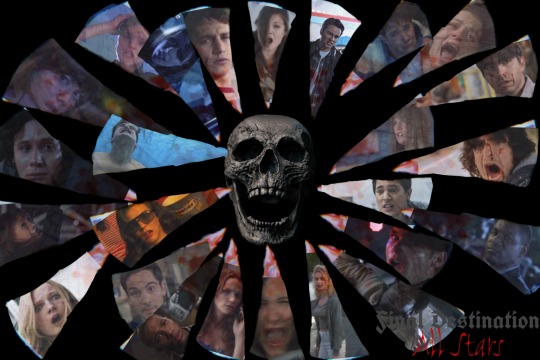
Final Destination All Stars
Made By Me
Cast:
Alex Browning
Kimberly Corman
Wendy Christensen
Nick O'Bannon
Sam Lawton
Clear Rivers
Thomas Burke
Kevin Fischer
Lori Milligan
Molly Harper
Carter Horton
Eugene Dix
Ian McKinley
Hunt Wynorski
Peter Friedkin
Terry Chaney
Rory Peters
Erin Ulmer
Janet Cunningham
Candice Hooper
Billy Hitchcock
Kat Jennings
Julie Christensen
George Lanter
Nathan Sears
#final destination#alex browning#kimberly corman#wendy christensen#nick o'bannon#sam lawton#clear rivers#thomas burke#kevin fischer#lori milligan#molly harper#carter horton#eugene dix#ian mckinley#hunt wynorski#peter friedkin#terry chaney#rory peters#erin ulmer#janet cunningham#candice hooper#billy hitchcock#kat jennings#julie christensen#george lanter#nathan sears
16 notes
·
View notes
Text

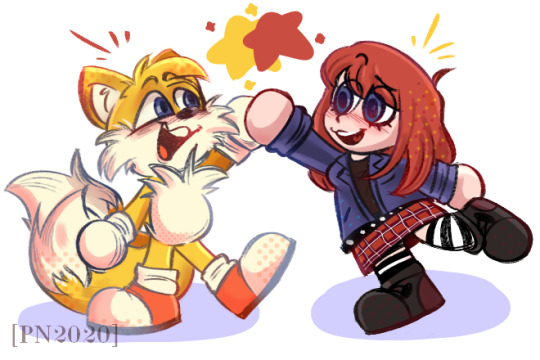
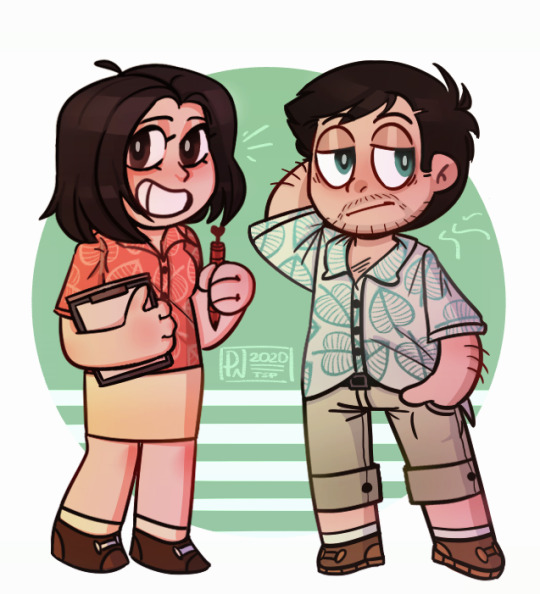

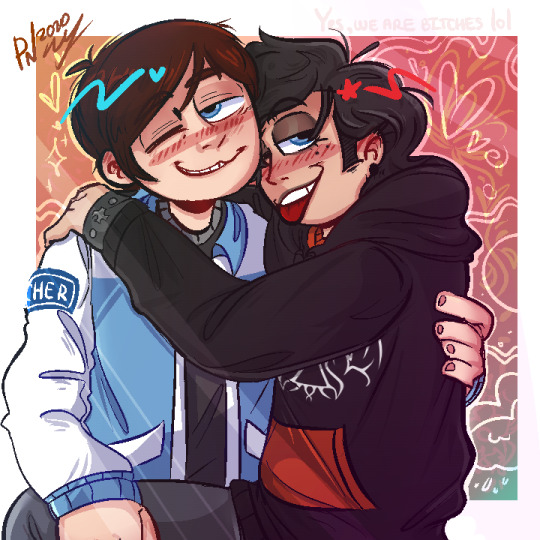

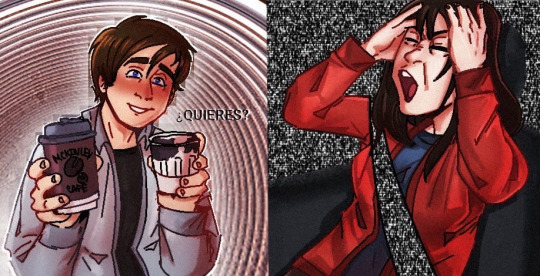


REPLOAD №1
Today I am kind and 3 years later I will re-upload some works that were also demolished as my account (due to my shitty mental state). Actually, I'll say this, this fandom gave me a bunch of cool people and we still have it. There were also gatherings of fans in Russia at the Destination, but we ran around the bars and looked for a friend who was hitching a ride from St. Petersburg to Moscow (it was scary). My other friend, a good clip editor for this fandom, is due to arrive soon. I love her very much, so I'll meet her at the train station with a cake!!
#final destination#final destination 2#final destination 3#kevin fischer#ian mckinley#wendy christensen#kimberly corman#thomas burke
7 notes
·
View notes
Text




Continuation of THIS post
Vito: Unicorn. Not really good with magic, mostly a "hooves on" type of pony. Cutie mark represents stamp fraud lol.
Burke: scruffy looking pegasus. Was a good flyer until the Butchers boys got a hold of him. Cutie mark is supposed to be a bottle with speed lines coming from it, for moonshine running.
Nicki: Pegasus like her father and brother. Freckles on her face and cutie mark is meant to represent keeping the 'shine flowing.
Danny: Pegasus. Big into racing, always getting into racing completions either on the ground or in the air. Freckles as well but wing feathers are red white and blue...probably dyed them thinking they make him look faster. Cutie mark is a racing checkerboard flag with flames coming off of it.
Also forgot in the character creator on Pony Town you can look at their animated emotes and that means you can make your winged characters fly.

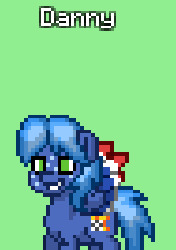
Donovans wing feathers match his lighter spots on his fur. You can also see the faint spots on his main body.
Danny you can see his obnoxious wing colors much better lol.
#mafia 3#mafia trilogy#my little pony#mlp#pony town#vito scaletta#thomas burke#danny burke#nicki burke#pegasus#unicorn
6 notes
·
View notes
Text
i really wished the second movie and the franchise as a whole had delved a little deeper into the implication that clear was empathic, at least towards alex. she felt his panic before he voiced it, she felt the signs but couldn't see them like he did... couldn't accept them like he did.
until the second movie, then she's practically a master in interpreting the signs (thanks to alex and all their time together) but there's no mention of what she said to him in her art garage. her being able to feel his fear and believe it, believe him, is the reason she survived until fd2 in the first place. and yet! nothing!
wouldn't it have been an interesting spin if empaths and visionaries were a package deal? with every disaster, there's always one and the other? two sides of a psychic coin coming together to try to cheat death? how different would fd2 had gone if clear could feel kimberly? i doubt clear would've died if she was allowed to remain an empath, she would've felt kimberly start to panic and run away from eugene's room back to her to see what was wrong. the explosion would have missed her! then she would have been a final survivor with kimberly and burke! guys!
#final destination#final destination 2#final destination franchise#final destination films#final destination movies#alex browning#clear rivers#kimberly corman#thomas burke#eugene dix
8 notes
·
View notes
Text
My favorite Final Destination characters:






8 notes
·
View notes
Text
when I say acab I mean it about every cop except for officer thomas burke from final destination 2
19 notes
·
View notes
Text
a comedy
29 notes
·
View notes
Text

This photo of Charlie Chaplin accompanied an article written by Thomas Burke. Titled “The Tragic Comedian” (Pearson’s Magazine, March, 1922), was also reprinted in “The Legend of Charlie Chaplin” by Peter Haining (1982).
A couple of the many things Burke had to say, about the most famous man in the world.
“He is the playfellow of the world, and he is the loneliest, saddest man I ever knew.”
“He inspires immediately, not admiration or respect, but affection; and one gives it impulsively”.
Thomas Burke an author (Limehouse Nights – 1916, some of which, was the inspiration for D.W. Griffiths “Broken Blossoms”) who also shared some of Chaplin’s Victorian London background, met Charlie during his return visit in 1921. They spent a long night wandering those very streets…
30 notes
·
View notes
Note
To fd2
What is Rory like sober?
Evan: Hes basically just normal Rory but a little boring.
Tim: I don't think I've ever really seen Rory sober before. I'd imagine he'd be a little less...weird? I don't know.
Nora: Rory's very lovely when hes sober and I wish he was like that more often.
Kat: I hate him either way but I guess I can tolerate him more when hes sober.
Eugene: He literally acts the exact same. Maybe hes been addicted for so long that hes high no matter what. Or hes just a natural dumbass.
Clear: Hes fine and actually pretty helpful.
Kimberly: Even though Rory is entertaining when hes out of it, hes more bearable to be around when hes sober.
Burke: When hes sober, Rory is actually a pretty chill guy. Still not very responsible, but its still better than finding him passed out somewhere.
#final destination#final destination 2#evan lewis#tim carpenter#nora carpenter#kat jennings#eugene dix#clear rivers#kimberly corman#thomas burke
4 notes
·
View notes
Text

The History of New Bordeaux
Situated just a few miles north of New Orleans, Louisiana, “Bourbon City” is home to a unique blend of cultures, night life, history, and music, as well as being one of the busiest ports in the Gulf of Mexico, alongside its sister city. Founded by the French, ruled by Spanish forces for roughly 40 years then purchased as part of 1803’s Louisiana Purchase, New Bordeaux hosts a unique blend of Creole and Latin American cultures and vibrant (though tumultuous) history. The city has always been trapped in a power struggle between countless groups, but despite issues both social (poverty, crime rates, racial strife) and natural (slowly sinking land, hurricanes, floods), New Bordeaux persists as a testament to human will.
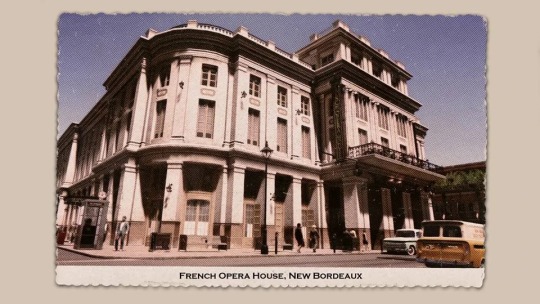
France & Sister City
The first residents of what would become New Bordeaux were Native American nations— Chitimacha, Coushatta, Tunica-Biloxi, amongst many other nations— though following the French exploration during the 1600-1700s (not including De Soto of the 1540s), most indigenous nations had been pushed away from the mouth of the Mississippi River. It was Bienville of France who established the first main settler colonies in the late 1710s, alongside New Bordeaux (which was just considered an outer territory of Nouvelle-Orléans). The city was officially established in 1718, though the original name has been lost to time as different areas called the city different names. Many historians have coined this as the “Proto-Bordeaux” period.
During this time, numerous groups lived in the territory, including: French settlers, formerly enslaved people (typically from the English colonies though not always) as well as free Black people, a few Latin American groups (primarily what is now known as the Dominican Republic and Cuba— note that the surge in this population would occur mostly during the Spanish Trials), and a few natives who had not been successfully pushed out of the region.
Spanish Trials to Louisiana Purchase
While New Orleans fell to Spanish power in 1763, Proto-Bordeaux navigated Spanish influence by avoiding interaction beyond trade. Though they did eventually “fall” into Spanish rule, it took two years for a semi-peaceful transition of power to occur. Under Spanish rule (though not nearly as strong as Spain’s grip on NOLA), Proto-Bordeaux now legally had a class of free People of Color (whereas beforehand it was a disputed but mostly accepted rule) and traded heavily with Cuba, Mexico, and other Latin American countries. The strong Catholic influence showed through the city’s architecture and art despite the Spanish not being extremely active in the city.
In 1796, Proto-Bordeaux faced the “Spanish Trials”, which was an attempt by the Spanish ruling class to unite the areas in hopes of economic gains and control. Countless people were put on trial as “insurrectionists” for disagreeing or speaking out against unification— the records however seem to indicate that most of these people who were put on trial were in fact not speaking out against unification but rather the injustices they faced from other groups in the city. The city would eventually tear itself apart in 1798 before a tentative reunification under brief French rule, thus ending the “Proto-Bordeaux” period.
In 1803, Louisianan territory reverted back to French rule but was sold quickly after by Napoleon in order to gain money to fund his war(s) in Europe. New Bordeaux became a wealthy port city for the United States.
Pre-Civil War
Alongside its sister city, New Bordeaux’s ports sailed raw materials and products to the Caribbean, South America, and Europe. Thousands of enslaved people were sold in its markets, but its free Black community thrived. Until the 1830s, the majority of its residents still spoke French or a local dialect that combined Spanish, French, and Native American languages. New Bordeaux notably had (and still has) a slightly different accent from New Orleans.
During the War of 1812, there was a small battle against British forces, and despite the smaller numbers, New Bordeaux’s citizens won and were able to push the British a bit more south.
Crime organizations from each neighborhood/area began to show up around this time, though it was sporadic— between pirates, smugglers, ethnic crime groups, and other groups, no one held much influence over the underbelly of the city. It was also during this time of crime that a very early form of what would come to be known as the Southern Union and Dixie Mob, respectively, would kidnap freed Black people and sell them to the highest bidder, usually the French or Spanish ruling classes on the ritzier ends of the city. It would be Reconstruction before either gained any significant power.
During Civil War
The Civil War was the largest turning point for NB, alongside New Orleans. Unlike NOLA, the residents were split between Confederate support and Union support, which led to the city more or less destroying itself (again) until a few families— the Harless family and Duvall family most notably— united the city under the Confederate flag. Even when NOLA fell to Union control, the Confederate force of NB attempted to fight back Union troops to no avail.
The Battle of New Bordeaux in August of 1862 (just a few months after New Orleans fell in April) lasted 3 days and ended when General Duvall was killed on field and most of the Confederate troops either fled or surrendered to the Union. The Union’s control of the city marked the second destruction and the end to the first era of New Bordeaux.
Reconstruction
Reconstruction was a turbulent time, especially for New Bordeaux, as the city had entered a new age of tense unification that no one seemed to have wanted. Sharecropping on old plantations in Frisco Fields area was not uncommon, though most free Black people were regulated to poverty with no conceivable way out, even with the aid of the US military. It didn’t take long for former Confederates to fight against every freedom given to the (already freed, for the large part) Black people of NB, to the point that Reconstruction was considered and early failure there. NOLA remained a powerful port, as NB’s older plantations started to fade away into the age of antiquity. However, their port remained mostly intact, and trade became a crutch as the city attempted to heal its internal wounds.
During Reconstruction, Confederate sympathizers and countless KKK-satellite organizations such as Dixie Mob and (more importantly) the Southern Union would seep into the city’s very fabric, alongside the numerous People of Color who already resided there. The United States government continually had a military presence stationed by the ports just in case the city attempted to destroy itself again despite the general failure of Reconstruction. (This would later contribute to the CIA presence in the city, but that would not be until the 40s with the OSS then later the CIA in the 50s.)
During this time, a few cults— most notably the Ensanglante— began to pop up as Confederate sympathizers looked for any and all excuses for their losses during the war. The notion of “the Filth” was in part inspired from Mormon doctrine, and much like Mormonism, focused on white American Imperialism and superiority over everything on Earth. The movements remained an upper-class cult, with the lower classes being “implemented” in the early part of the 20th century.

Early 20th Century
New Bordeaux, once again, began to rebuild its city. In the 1880s, Haitian and Italian immigrants appeared in droves, and by 1910, they were a part of the fabric of the city. Dominican and Cuban influences were already present but it began to show more in the city’s budding night life.
Compared to NOLA’s jazz, NB had more emphasis on dancing and blending together stringed instruments with the brass typical with jazz. Cello, violin, piano, trumpet, trombone, and drums were staples of New Bordeaux jazz, alongside Latin American-influenced dancing (mostly Dominican and Cuban). The Harlem Renaissance of New York influenced art and poetry from the Black community of NB and reinvigorated hope for freedom like what was seen during French-Spanish rule. Drinking also became a staple, and due to the pre-existing smuggling rings from pre-Reconstruction, 1920s’ Prohibition meant barely anything to the citizens. Numerous gangs also rose to prominence in the 20s, including the Italian-American mafia.
The Rule of Sal Marcano
Starting in the late 1800s, smaller crime organizations in different regions of the city had begun to crop up, though it would be until the late-1930s before many (beyond the Italian-American mafia) were able to seize any sizeable power. In the 20s, bootlegging using the underground tunnels was mostly blended between gangs (before Burke showing up), and areas like Delray Hollow (eventually being taken over by Samuel Robinson) and Barclay Mills (Enzo Conti’s area) each had its own crime situation. That all ended after Sal Marcano and his brothers forcibly took over NB’s crime underbelly.
Following the brutal murder of Giuseppe Carrillo (which is known as All Saints’ Day Massacre) under the guise of revenge— Sal had set his father up to be killed over gambling debts then accuse Carrillo of being merciless— the Marcano Family was established and took over all of the city’s rackets. It would be the late 1930s when Sal gained power in Cuba through casinos and ports, which brought in enough money to take the partially-crumbling city into a potential tourist attraction.
Sal was both a blessing and a curse to the city, bringing in more revenue than ever seen before from ports, colleges (which would now be considered STEM-centered), alcohol, weapon smuggling, underground gambling, and more. But, it seemed only to make the rich man richer and the poor man poorer.
Beyond the rule of Marcano, bluegrass and very early rock began (or, began to surge in popularity) in areas such as Delray Hollow, which produced 3 blues legends of the 1930s*.
Mid-Century
The 40s saw a large surge in nationalism in the city, as well as campaigns like Double-V that contributed to a large population of Black people from NB enlisting. Records show that roughly 15% of Black men from the city (who weren’t drafted) enlisted in the war. However, despite their best efforts, the racism back home only got worse thanks to people like Remy Duvall and the Southern Union. It wasn’t all bad however— Delray Hollow began to have more business, and a few social programs were established to help returning veterans gain some amount of education following their time in World War II.
Crime wise, Sal controlled most of the crime scene in the late 40s or otherwise coerced (or intimidated) their leaders into joining him— which is how Enzo Conti rose through the ranks, and Samuel “Sammy” Robinson (who was already head of the Black Mob) gained more influence. It was in the 1950s that the Haitian gang began to form and cause troubles for the Black Mob, following a large influx of immigrants due to political strife and violence back home.
In the 1950s, the town flourished. The night life and local attractions brought in thousands of tourists every year, due in part to the marketing from Lou Marcano, and the Marcano Family had a successful grip on both the police force and crime scene. But no amount of tourism or revenue could save a city so divided.
Following Executive Order 9981 in 1948, then Brown V Board of Education in 1954, protests struck all across the city. The ones that advocated for the instating of these policies turned violent when the police force and firefighters would release tear gas or hose down protesters, leading to countless deaths and widespread fear. Sal Marcano was never officially proven to have ties to these, though it is highly speculated that he played some part in all of this. This would start a trend of protests, violence, then fearful silence that would persist for years. Yet, the people pressed on, painting murals and expressing grievances through art when possible. Music became one of the biggest escapes for People of Color in NB, and rock had a distinct sound in the city. Acoustic guitar mixed with electric, stringed instruments, piano, organ, drums— it would build upon the foundation from the jazz scene, with its own twist of melancholy and anger (which was and is justified).
In the 60s the city trucked on, plagued with even more violence and hatred than ever before, but the starry-eyed hope for change persisted. The Korean War slipped by without much of a mention in the late 50s and no one exactly wanted a fresh war with French-Indochina— the only issue was that this new fangled “Vietnam” was falling to the commies, and god forbid that occur. Compared to World War II, Vietnam saw very few non-draftees from New Bordeaux, and the city’s poorer population tended to side with anti-war sentiment. In a way, social movements from way back in the late 1880s (as mass-industrialization occurred) contributed to the surprisingly strong socialist presence in the city. Alongside this came a vocal Black Power/Black nationalism scene, primarily seen through radio shows like “The Hollow Speaks” and the Black Panther branch that was eventually burnt in 1969.
The Black Mob, led officially by Sammy Robinson, had an iron grip on Delray Hollow despite the tension between them and the Haitians. The area continued to see large art movements, thanks in part to Sammy’s wife Perla, who funded many of the community plays, band nights, and even occasional local school events. Following her passing, a charity theatre was built.
By 1966, Sal Marcano had begun plans on “going legit” by legalizing gambling and creating a casino— it wasn’t suspected or a concern to anyone outside of his payroll, and even then, the move seemed to be purely due to nepotism. He wanted his son, Giorgi, to take over a semi-legitimate business and live comfortably (unlike he did in his early life). This would all backfire in the end.
A City Ablaze
The summer and fall of 1968 were arguably the largest to-date catalyst for the city’s continued turmoil. Many of the details remain vague or under lock and key by the Federal Bureau of Investigation— that being said, many of the files were declassified in 2017 following the (in)famous documentary in 2016 (in-universe, of course).
Following the heist of a federal reserve during the height of New Bordeaux’s liveliest celebration, Mardi Gras, Sammy Robinson’s bar was set on fire with him, his son Ellis, and Daniel “Danny” Burke (son of the bootlegger and notorious drunkard Thomas Burke) being killed preemptively by either being stabbed or shot by Sal and Giorgi Marcano and another man. Sammy’s adoptive son, Lincoln Clay (an army vet and distinguished service cross receiver), had survived being shot in the head and left to burn after being dragged out by a local priest. After a few months of in-and-out consciousness, Lincoln Clay began his violent streak that would tear the city limb from limb.
Starting in early March, the Federal Bureau of Investigation came down to the city to investigate the strange burning of Sammy’s Bar as well as the Marcano Family. The investigation was headed by Jonathan Maguire and faced numerous setbacks from the start— the residents didn’t talk to outsiders (especially not “feds”, since CIA agents and military personnel were already prevalent in the city), evidence was hard to come by, and even most of their surveillance equipment and files were stolen. Despite this, Maguire and his team continued their investigations.
On the other side of ‘justice’, Lincoln Clay, alongside his former CIA handler John Donovan and a cohort of other crime leaders from different areas of the city, proceeded to brutally massacre the entire Marcano Family and any associates that didn’t immediately side with Clay. Interestingly enough, it was Lincoln who did most of the work himself which wasn’t— and isn’t— seen much in gang activity. What is also of note is the sheer publicity and violence of many of the kills (hanging from a ferris wheel in an abandoned amusement park, thrown from the penthouse of the Royal Hotel, hung on a cross and burned alive, gutted alive and hung on a statue, etc.), which became solidified in the city’s history long before the blood dried up.
By October of 1968, hundreds of people— including Sal Marcano and his son— were left dead in warehouses, streets, and pavements. The FBI struggled with keeping track with everything, so much so that Lincoln Clay was able to slip away to god knows where. The city, for the 3rd time in its history, was left in shambles.
The Song Continues
The New Bordeaux Gang War (1969-1973)* temporarily shut down the city’s ports as federal agents and state guard troops attempted to calm the city down, but to little avail. Whatever remnants of the pre-Clay crime scene continually fought for power, money, land, or anything they could get their hands on. By 1973, Thomas Burke of the Irish mob and “Cassandra” of the Haitian gang were both dead, and with Vito Scaletta having fled in 1972, the city was left to smaller regional gangs and the upper-class, plus outside forces. New Bordeaux went back to its Reconstruction state both economically and (partially) socially.
Enter the late-1970s oil crisis; unemployment rose to roughly 30%, crimes spiked by 120% (though most were robbery-related and not murder), and general welfare decreased further than ever before. Then-governor Edwin W. Edwards (1972-1980) signed numerous bills to help build up the economy and specifically aid Louisiana’s port cities with infrastructure, social programs, and economic stability. President Carter (1977-1981) also sent a permanent FBI presence to help with smoother elections and general peacekeeping (in hopes of avoiding too much underground influence in politics as seen with the Marcanos). With this, NB saw new development that aided in restoring the city to at least some extent. Note that some historians state that it was the city itself that mostly did the work, with occasional state and federal help, but there is not enough evidence to suggest that.
The 1980s and 90s continued to evolve the city’s night life, political reforms, and economic development through policies and culture shifts. For the first time since pre-Louisiana purchase, racial tensions also radically decreased, though lynching still remained a hot-button issue. Tourism also began to slowly come back as the city stabilized. It never reached the same peak as it did under Lou Marcano, but the revenue brought in was enough to aid in some social programs and better school supplies for the district. New Bordeaux’s higher education system continued to lean towards STEM schooling though the arts still flourished in Delray Hollow and its historically Black college*, and further national funding helped repair some of the older schools (higher education or otherwise).
Modern Day
New Bordeaux still retains its status as a vibrant night-life city, despite the consistent strife brewing in its residents. Hurricane Katrina flooded roughly 60% of the city— compared to NOLA’s 80% flooding— and killed over 700 residents in the city alone (the official death count was counted at around 2,000 nationally)^. The crime scene is still divided, with drug and human trafficking being the main crimes committed by various gangs. The moniker of “Bourbon City” never died, it simply revealed itself to have a double meaning: the city that will always go up in flames.

Other Notes
Note from wiki: “New Bordeaux is a city on the Gulf Coast of the United States that serves as the setting for Mafia III. It is known for its round-the-clock nightlife, vibrant live-music scene, and spicy, singular cuisine. With ten districts featuring a mixture of ethnicities, the city is a true melting pot of French, Irish, Italian, Haitian, Cuban, African, and American cultures.” All I did was add Dominican as well because Lincoln’s actor, Alex Hernandez, is Dominican and I wanted to pay homage to that. Also because why the fuck not.
NB was a military city in some regards as the US government wanted to use it for ports to spy on other countries (mostly Latin American), hence the CIA presence in the 50s. This also meant that some criminals in NB jails were suckered into joining Project MK-ULTRA, though news about it never leaked outside of the city. The CIA didn’t (officially) stop operations there until the mid-2010s after countless protests from over the years finally caught up.
Deathgrass (rock and “metal” ish influenced bluegrass) has heavy roots in NB. NB is known for its use of the electric guitar and bass alongside drums, acoustic guitar, piano, a variety of stringed instruments like the violin, and poignant lyrics (if there are any) to create an unique city-sound. Music is one of the prides of the city!
*: I do not know much on music history, so if you have commentary, please add it! Or hell, even name ideas or something.
*: I’ll write up a whole other post on this, my thoughts are too scattered to share here yet. I’m open to questions though!
*: Still need to name this and come up with a small backstory. In short, it was established in the 1880s but really only became operational in the 1920s and 30s, and remains open to this day. The 1986 Centennial was definitely fascinating! (I’m just too lazy to elaborate on that.)
^: more people died in this version of Katrina. The real death count was roughly 1,500, based on what I could find.
#mafia 3#long post#lincoln clay#john donovan#father james#james ballard#how else do I tag this#thomas burke#vito scaletta#meta#mafia iii#the personal logs
60 notes
·
View notes
Text
incredibly fucked up that burke is 11 years older than vito but doesn’t have a single gray hair on his head
4 notes
·
View notes
Text

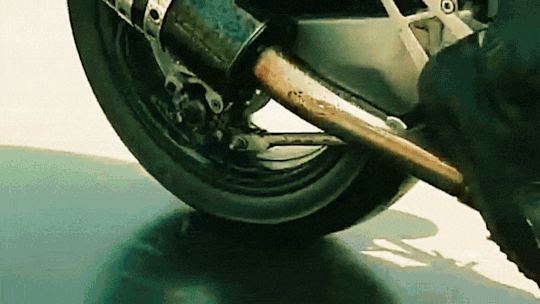


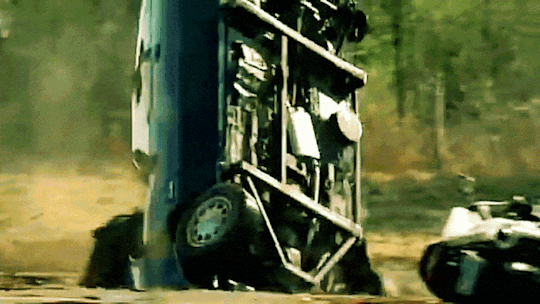

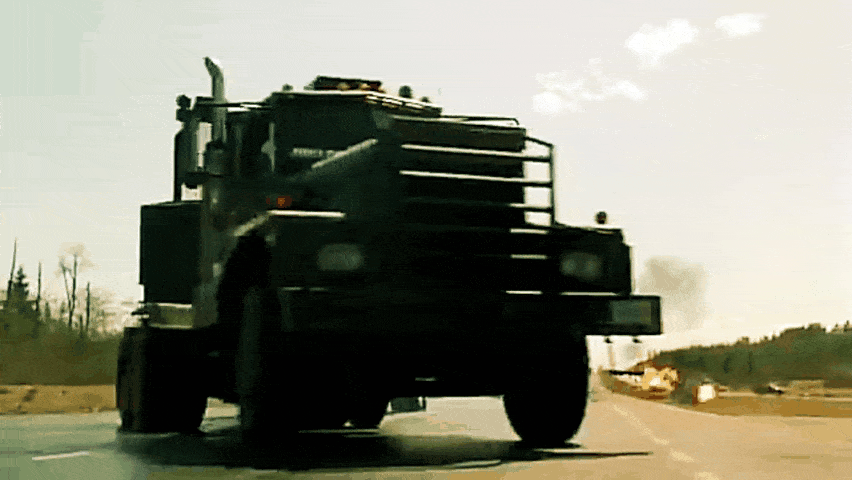



@giftober 2022 | Day 10+11: Comfort (franchise) and Vehicles
Final Destination 2 (2003)
#horror#2000s#giftober#giftober2022#thriller#final destination#final destination 2#2000s horror#2000s thriller#david r ellis#aj cook#kimberly corman#thomas burke#officer thomas burke#david paetkau#evan lewis#jonathan cherry
25 notes
·
View notes
Text
would anyone be interested in like,,,a mafia 3 au where after Lincoln wakes up from the shot to the head, New Bordeaux is more magic/fantasy than based in reality??
Donovan is a "hear all, see all" type of guy. Maybe he can read minds, and this is why he tends to seclude himself. Linc is almost the only person he can bear to be around.
Cassandra, having ties with voodoo, can also see and talk with ghosts, spirits, etc. Maybe she takes Linc to Sammy's bar one time and acts as a middle-man. Linc gets some closure but he's still so hell-bent on his revenge/justice.
I'm not sure what to do with Vito, Burke, etc. Think this would be cool to write, in some one-shots. IDK. If you have any ideas for Vito and Burke, or anyone else, pls say so!!! I'll obvs credit you if/when I write this out <33
#tell me this wouldn't be kind of cool#apparently m3 has some haunted spots??#lincoln clay#john donovan#mafia 3 cassandra#thomas burke#vito scaletta#mafia#mafia trilogy#mafia 3#vomagari's mafia dump
30 notes
·
View notes